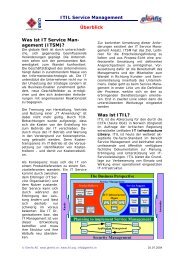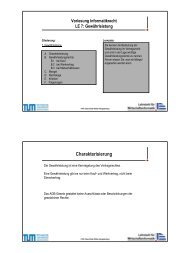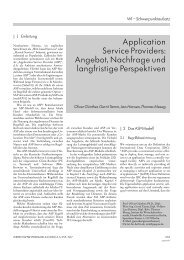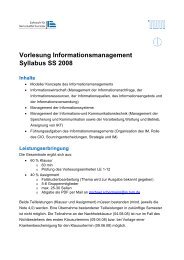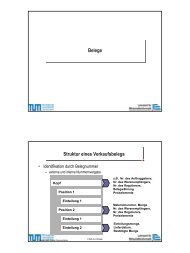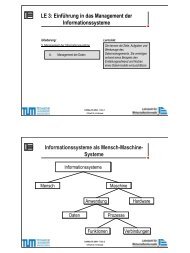Cross-cultural transitions and wellness: Dealing with culture shock
Cross-cultural transitions and wellness: Dealing with culture shock
Cross-cultural transitions and wellness: Dealing with culture shock
Create successful ePaper yourself
Turn your PDF publications into a flip-book with our unique Google optimized e-Paper software.
International Journal for the Advancement of Counselling 14: 105-119, 1991.<br />
© 1991 Kluwer Academic Publishers. Printed in the Netherl<strong>and</strong>s.<br />
<strong>Cross</strong>-<strong>cultural</strong> <strong>transitions</strong> <strong>and</strong> <strong>wellness</strong>:<br />
<strong>Dealing</strong> <strong>with</strong> <strong>culture</strong> <strong>shock</strong><br />
MICHAEL KIM ZAPF<br />
Faculty of Social Work, The University of Calgary, Edmonton Division<br />
Abstract. <strong>Cross</strong>-<strong>cultural</strong> communication has emerged as a major concern for the helping profes-<br />
sions in our multi<strong>cultural</strong> society. Much has been written about recognizing the <strong>cultural</strong> biases<br />
inherent in all problem-solving <strong>and</strong> development models as well as improving communication<br />
between <strong>cultural</strong> groups. There are some situations, however, where <strong>culture</strong> itself is the problem<br />
rather than simply a communication obstacle to be overcome between client <strong>and</strong> worker.<br />
Counsellors may encounter persons who have been uprooted <strong>and</strong> transplanted, victims of <strong>culture</strong><br />
<strong>shock</strong>, 'casualties of inter<strong>cultural</strong> mobility' (Draguns, 1981, p. 11). This paper examines the<br />
unavoidable stress experienced when a person moving to a new <strong>culture</strong> finds that familiar cues from<br />
home are suddenly replaced <strong>with</strong> strange, ambiguous, <strong>and</strong> unpredictable cues in the new setting. A<br />
'U-Curve' pattern of adjustment is offered as a conceptual framework for underst<strong>and</strong>ing the<br />
stressful period of adjustment in a new <strong>culture</strong>, <strong>and</strong> several predictor variables are advanced which<br />
may influence the degree of <strong>culture</strong> <strong>shock</strong> <strong>and</strong> recovery reported by individuals. The paper<br />
concludes <strong>with</strong> an overview of strategies for <strong>wellness</strong>, suggestions for promoting adjustment <strong>and</strong><br />
learning in a new <strong>culture</strong>.<br />
Culture<br />
More than simply a set of customs, <strong>culture</strong><br />
constitutes a way fully characteristic of organizing life, of thinking <strong>and</strong> of<br />
conceiving the underlying postulates of the principal human institutions,<br />
of relating to <strong>and</strong> interacting <strong>with</strong> other intelligent human beings. It<br />
influences our way of experimenting <strong>with</strong> the universe, providing a<br />
combination of intermediate patterns which channel our feelings <strong>and</strong><br />
thoughts, making us react in a particular way, different from those who<br />
have been submerged in different pattems (Gutierrez, 1973, p. 17).<br />
A <strong>culture</strong> can be understood from this perspective as a network of shared<br />
meanings that are taken for granted as reality by those interacting <strong>with</strong>in the<br />
network. This view of <strong>culture</strong> proposes that a community of people tend to<br />
construct a common model or map of the world derived from their shared<br />
experiences <strong>and</strong> then use these pre-determined categories as a background or
106<br />
setting against which incoming experiences are interpreted. Without such a<br />
model or map, people would experience the world as totally chaotic <strong>and</strong><br />
unpredictable. In addition to traditional behaviours <strong>and</strong> customs, <strong>culture</strong> then<br />
includes a conceptual style which 'reflects more a manner of organizing<br />
things, of putting things in a certain way, of looking at the world in a distinct<br />
fashion' (Price-Williams, 1980, p. 157). People attempt to structure the<br />
outside world by matching external stimuli against internal conceptual<br />
patterns. When such a match is made, the person is able to give meaning to<br />
an outside event. If the match cannot be made, however, the person may feel<br />
disoriented, frustrated, or afraid. In order to survive <strong>and</strong> manage in our<br />
world, we must develop a useful set of expectations which allow us to<br />
interact <strong>with</strong> our social environment to meet our needs.<br />
Vastly different patterns of experience over time will result in vastly<br />
different world views or background assumptions. People <strong>with</strong> different<br />
<strong>culture</strong>s will perceive the world differently because they have been 'select-<br />
ively sensitized to certain arrays of stimuli rather than others as a function of<br />
membership in one <strong>cultural</strong> group rather than another' (HaUowell, 1951, p.<br />
168). As long as a person is interacting <strong>with</strong> others who share the same world<br />
view, he or she may not consciously be aware of the particular patterns of<br />
meaning assumed. The shared reality is simply taken for granted. It is<br />
through contact <strong>with</strong> persons who see the world differently that an individual<br />
can become acutely aware of the <strong>cultural</strong> patterns he or she is using.<br />
<strong>Cross</strong>-<strong>cultural</strong> interaction poses the situation where assumption of reciprocal<br />
perspectives is no longer valid, where there is no concensus about reality,<br />
where the background expectancies are not shared. In this situation, a person<br />
may experience frustration <strong>and</strong> disorientation as predictions break down,<br />
incoming stimuli do not match familiar patterns, <strong>and</strong> actions are misinter-<br />
preted by others.<br />
Moving across <strong>culture</strong>s<br />
When people move to a new <strong>culture</strong><br />
they take <strong>with</strong> them the taken-for-granted meaning structure of their home<br />
<strong>culture</strong>. They continue to choose actions consistent <strong>with</strong> it, <strong>and</strong> to interpret<br />
their own <strong>and</strong> their host's actions in terms of it (Noesjirwan <strong>and</strong> Freestone,<br />
1979, p. 190).<br />
Conflicts related to the differences in rules, meanings, <strong>and</strong> values between<br />
the two <strong>culture</strong>s will be inevitable.<br />
Several occupational groups have been studied <strong>with</strong> regard to their
107<br />
adjustment patterns in new <strong>culture</strong>s: foreign scholars <strong>and</strong> students, business<br />
executives, technical assistants, Peace Corps volunteers, teachers, social<br />
workers <strong>and</strong> migrant workers. It is not surprising that anthropologists have<br />
also contributed to the literature on problems of <strong>cultural</strong> adjustment since<br />
<strong>culture</strong> constitutes a major focus of study in their discipline. There appears to<br />
be general agreement in this literature that a person entering a new <strong>culture</strong><br />
will progress through a series of states as summarized in Table 1.<br />
Some have proposed a further stage of 'Independence' (Adler, 1975)or<br />
'Double-Giving' (Yoshikawa, 1988) wherein the person transcends the<br />
context of any one <strong>culture</strong>, but this appears to be more of an existential state<br />
beyond the scope of this discussion.<br />
Culture <strong>shock</strong> <strong>and</strong> recovery<br />
The initial phase of the acculturation process can be seen from Table 1 to be a<br />
negative experience, an emotional 'down', a decreased sense of well-being.<br />
This experience has been labelled as Culture Shock in the literature since the<br />
early 1950s when anthropologist Kalervo Oberg introduced the expression.<br />
Oberg depicted <strong>culture</strong> <strong>shock</strong> as a mental illness, an occupational pathology<br />
for persons transplanted abroad 'precipitated by the anxiety that results from<br />
losing all our familiar signs <strong>and</strong> symbols of social intercourse' (1954, p. 1).<br />
Hall (1959) added the element of unfamiliar stimuli from the new environ-<br />
ment in his description of <strong>culture</strong> <strong>shock</strong> as 'a removal or distortion of many<br />
of the familiar cues one encounters at home <strong>and</strong> the substitution for them of<br />
other cues which are strange' (p. 156). In addition to the change in cues,<br />
Adler's (1975) definition included the reaction of the individual:<br />
Culture <strong>shock</strong> is primarily a set of emotional reactions to the loss of<br />
perceptual reinforcements from one's own <strong>culture</strong>, to new <strong>cultural</strong> stimuli<br />
which have little or no meaning, <strong>and</strong> to the misunderst<strong>and</strong>ing of new <strong>and</strong><br />
diverse experiences (p. 13).<br />
Kealey (1978) stressed this interaction between individual <strong>and</strong> environment:<br />
it is not the new <strong>culture</strong> or environment itself that CAUSES the upset.<br />
Rather it is one-self in contact <strong>with</strong> the new environment that creates the<br />
physical/emotional upset (p. 48).<br />
Ruben, Askling, <strong>and</strong> Kealey (1977) connected <strong>culture</strong> <strong>shock</strong> <strong>with</strong> adaptation<br />
or adjustment:
108<br />
Table 1. Stages of <strong>cultural</strong> adjustment<br />
Author Stage 1 Stage 2 Stage 3 Stage 4<br />
Oberg 1954, 1960 Incubation Crisis Recovery Full Recovery<br />
Lysgaard 1955 Spectator Crisis Coming to Regained<br />
Terms Adjustment<br />
Smalley 1963 Fascination Hostility/ Adjustment Bi<strong>cultural</strong>ism<br />
Frustration<br />
Gullahorn <strong>and</strong> Excitement Disillusionment<br />
Gullahorn 1963<br />
Ex 1966 Uprooting Frustration<br />
Lifton 1969 Confrontation Emptying<br />
Rhinesmith <strong>and</strong> Arrival Unfreezing<br />
Hoopes 1970<br />
Pfister-Ammende Transplantation Uprooting<br />
1973<br />
Curle 1973 Separation Trauma/Shock<br />
Richardson 1974 Elation Depression<br />
Adler 1975 Contact Disintegration<br />
Klein 1977 Spectator Stress<br />
Kealey 1978 Exploration Frustration<br />
Harris <strong>and</strong> Moran Awareness Rage<br />
1979<br />
Kohls 1979 Initial Hostility<br />
Euphoria<br />
Hertz 1981 Arrival Impact<br />
Fumham <strong>and</strong> Elation/ Frustration<br />
Bochner 1982 Optimism<br />
Zwingmann <strong>and</strong> Impact/ Loss<br />
Gunn 1983 Uprooting<br />
Berry 1985, Honeymoon Conflict<br />
1985b Contact<br />
Confusion Positive<br />
Adjustment<br />
Habituation Restoration<br />
Reordering Renewal<br />
Moving Refreezing<br />
Resettlement Adjustment<br />
Reconnection Adjustment<br />
Recovery Acculturation<br />
Reintegration Autonomy<br />
Coming to Decision<br />
Terms<br />
Coping Adjustment<br />
Introspection Integration<br />
Gradual Adaptation<br />
Adjustment<br />
Rebound Coping<br />
Confusion Confidence/<br />
Satisfaction<br />
Recovery Reaction<br />
Identity Adaptations<br />
Crisis
109<br />
Culture <strong>shock</strong> focuses on the manner in which persons experience <strong>and</strong><br />
cope <strong>with</strong> the cyclic psychological, physiological, <strong>and</strong> vocational fluctua-<br />
tions associated <strong>with</strong> the adjustment in the first months in a new environ-<br />
ment (p. 91).<br />
Spradley <strong>and</strong> Phillips (1972) observed that a dramatic change in <strong>cultural</strong><br />
environment could be considered as a 'stressor' from the perspective of the<br />
stress model developed by Selye (1956). Culture <strong>shock</strong> then could be<br />
understood as a state of stress, 'the resultant tension or disequilibrium<br />
produced <strong>with</strong>in the organism ... generally inferred from the presence of<br />
indicators known as stress responses' (Spradley <strong>and</strong> Phillips, 1972, p. 154).<br />
Other writers have supported this view of <strong>culture</strong> <strong>shock</strong> as a stress reaction<br />
derived from an inability to underst<strong>and</strong> <strong>cultural</strong> cues (Argyle, 1988; Bam-<br />
lund, 1988; Bennett, 1977; Berry, 1975; Berry <strong>and</strong> Annis, 1974; Dyal <strong>and</strong><br />
Dyal, 1981; Gudykunst <strong>and</strong> Hammer, 1988; Harris <strong>and</strong> Moran, 1979; Locke<br />
<strong>and</strong> Feinsod, 1982; Taft, 1988).<br />
Bama (1983) identifies specific factors from the stress research literature<br />
that have been established as primary stressors: 'ambiguity, lack of certainty,<br />
<strong>and</strong> unpredictability' <strong>and</strong> shows how these correspond directly <strong>with</strong> the<br />
experiences of a person who enters a new <strong>culture</strong>. Using Selye's General<br />
Adaptation Syndrome (1956), Barna describes the neuro-physical reactions<br />
to stress <strong>and</strong> concludes that such a stress reaction cannot be avoided in<br />
cross-<strong>cultural</strong> encounters. From their research on counselling European immi-<br />
grants to Canada, Wyspianski <strong>and</strong> Fournier-Ruggles (1985) also assert that<br />
'even the most prepared will encounter some degree of <strong>culture</strong> <strong>shock</strong>' (p. 226).<br />
Everyone who attempts to live <strong>and</strong> work in a strange <strong>culture</strong> can expect to<br />
experience <strong>culture</strong> <strong>shock</strong> during the first months but the subjective experi-<br />
ence varies from person to person along dimensions of specific symptoms,<br />
intensity, <strong>and</strong> duration (Adler, 1975; Bama, 1983; Foster, 1973; Kealey,<br />
1978; Kim, 1988; Locke <strong>and</strong> Feinsod, 1982; McRae, Vittitow, <strong>and</strong> Mipos,<br />
1979; Seelye, 1984; Spradley <strong>and</strong> Phillips, 1972; Wyspianski <strong>and</strong> Fournier-<br />
Ruggles, 1985; Zapf, 1989).<br />
The increase in well-being <strong>and</strong> confidence experienced in the latter stages<br />
of the <strong>cultural</strong> adjustment pattern (Table 1) commonly is labelled as recovery<br />
in the literature. During this period, 'the "strange" is reprogrammed into the<br />
"normal" so that the stress response will not occur' (Barna, 1983, p. 43).<br />
Ruben <strong>and</strong> Kealey (1979) present this Recovery period as a time of<br />
'psychological adjustment'<br />
the term we give to the general psychological well-being, self-satisfaction,<br />
contentment, comfort-<strong>with</strong>, <strong>and</strong> accommodation-to a new environment<br />
after the initial perturbations which characterize <strong>culture</strong> <strong>shock</strong> have passed<br />
(p. 21).
110<br />
It will take time, according to Furnham (1988), 'to develop a new set of<br />
assumptions that help...to underst<strong>and</strong> <strong>and</strong> predict the behaviour of others' (p.<br />
46). Adler (1975) also described how over time the individual acquires<br />
underst<strong>and</strong>ing <strong>and</strong> coping skills appropriate to the new <strong>culture</strong>. Now<br />
'experientially capable of moving in <strong>and</strong> out of new situations' (p. 17), the<br />
person experiences regained confidence <strong>and</strong> an increased sense of well-<br />
being. Having recovered from the negative stress of <strong>culture</strong> <strong>shock</strong>, he or she<br />
can relax defenses <strong>and</strong> participate <strong>with</strong>in the new <strong>culture</strong>.<br />
Two related terms, '<strong>culture</strong> fatigue' <strong>and</strong> 'role <strong>shock</strong>' appear frequently in<br />
the literature on <strong>cultural</strong> adjustment <strong>and</strong> can be easily confused <strong>with</strong> <strong>culture</strong><br />
<strong>shock</strong>. 'Culture fatigue' (Guthrie, 1975; Seelye, 1984; Szanton, 1966)refers<br />
to an exhaustion resulting from the constant small adjustments required to<br />
function in a foreign <strong>culture</strong>. Much less severe than a <strong>shock</strong> reaction, <strong>culture</strong><br />
fatigue arises from the partial adjustment required of guests, travellers,<br />
visitors, people who are aware they will soon be returning to their home<br />
<strong>culture</strong>. 'Role <strong>shock</strong>' (Brislin <strong>and</strong> Pedersen, 1976; Byrnes, 1966; Harris <strong>and</strong><br />
Moran, 1979; Higbee, 1969) is a stress reaction brought on by the discrep-<br />
ancy between the role one expects to play <strong>and</strong> the actual role requirements in<br />
a new <strong>culture</strong>. Performance requirements may be ambiguous; associated<br />
role-sets <strong>and</strong> status may be very different in the new setting. Certainly this is<br />
related to <strong>culture</strong> <strong>shock</strong>. In a dissertation comparing the symptoms of <strong>culture</strong><br />
<strong>shock</strong> <strong>and</strong> role strain, Juarez (1972) concluded that they were 'manifestations<br />
of similar phenomena' (p. 258). Role <strong>shock</strong> appears to be an overwhelming<br />
role strain triggered by the move to a new <strong>culture</strong>. The term is usually applied<br />
to the occupational role <strong>and</strong> its effects related to effective work in the new<br />
setting. Role <strong>shock</strong> then can be considered a component of <strong>culture</strong> <strong>shock</strong>.<br />
The person moving to a new <strong>culture</strong> will experience the accumulated stress<br />
of ambiguous expectations in every aspect of living, not only the occupa-<br />
tional role.<br />
The U-curve<br />
The duration of individual stages may vary from person to person but the<br />
overall process of adjustment in a new <strong>culture</strong> can be expected to last about a<br />
year (Foster, 1973: Ruben <strong>and</strong> Kealey, 1979). Lysgaard (1955) first observed<br />
that the sequence of adjustment over time could be generalized to a<br />
curvilinear trend, a U-shaped curve of well-being plotted against time. This<br />
pattern is commonly referred to in the literature as the 'U-Curve Hypothesis'<br />
<strong>and</strong> is illustrated in Figure 1.<br />
Initial feelings of optimism <strong>and</strong> challenge give way to frustration <strong>and</strong><br />
confusion as the person is unable to interact in a meaningful way in the new
111<br />
<strong>culture</strong> (Culture Shock). Resolution of these difficulties leads to a restoration<br />
of confidence <strong>and</strong> integration <strong>with</strong> the new <strong>culture</strong> (Recovery). Failure to<br />
achieve resolution could mean continuing frustration <strong>and</strong> a possible decision<br />
to leave. Some have extended the U-curve to a 'W-Curve Hypothesis' to<br />
include the post-return adjustment period when the person moves back into<br />
the home <strong>culture</strong> (Adler, 1981; Berry, 1985b; Bochner, Lin <strong>and</strong> McLeod,<br />
1980; Brislin, Cushner, Cherrie <strong>and</strong> Yong, 1986; Brislin <strong>and</strong> VanBuren, 1974;<br />
Curie, 1973; Gullahom <strong>and</strong> Gullahom, 1963; Hertz, 1981; Martin, 1984).<br />
Accounts of persons moving across <strong>culture</strong>s have identified many indica-<br />
tors of <strong>culture</strong> <strong>shock</strong> including the following reported descriptors:<br />
sense of loss impatient apathetic<br />
confused irritable depressed<br />
ready to cry frustrated <strong>with</strong>drawn<br />
isolated thwarted helpless<br />
afraid angry vulnerable<br />
exhausted need to complain inadequate<br />
panic desire to resign overwhelmed<br />
homesick need to 'get out' self-doubt<br />
insomnia resentful bewildered<br />
disoriented contemptuous of clients pessimistic<br />
cynical unable to concentrate hopeless<br />
physically ill hostile rejected<br />
fatigued distrusting unaccepted<br />
different alienated anxiety<br />
lonely disenchanted suspicious<br />
The negative aspect of these traits is emphasized When contrasted <strong>with</strong> the<br />
following positive characteristics reported at the time of entry <strong>and</strong> in the<br />
recovery state of the <strong>cultural</strong> adjustment process:<br />
excitement challenge satisfaction<br />
fascination euphoria elation<br />
anticipation enthusiasm creative<br />
intrigue capable expressive<br />
confident optimism self-actualized<br />
stimulation acceptance energetic<br />
sense of discovery self-assured purposive<br />
While most accounts of <strong>culture</strong> <strong>shock</strong> <strong>and</strong> recovery in the literature are<br />
descriptive, some have attempted to operationalize the experience through
112<br />
WELL-<br />
BEING<br />
Arrival<br />
Culture Shock * Recover'/<br />
-/<br />
I I<br />
Settling In End of First<br />
Year<br />
TIME<br />
Figure 1. Generalized U-curve of adjustment to a new <strong>culture</strong> over time<br />
scales based on self-reports of symptom intensity <strong>and</strong> duration (Calhoun,<br />
1977; Kron, 1972; Ruben <strong>and</strong> Kealey, 1979; Zapf, 1989). Although usually<br />
composed of items identified as <strong>culture</strong> <strong>shock</strong> symptoms in the literature, the<br />
<strong>culture</strong> <strong>shock</strong> scales developed thus far must be acknowledged as general<br />
stress scales. There is always the possibility that the stress patterns picked up<br />
by these instruments were actually manifestations of some other process. It is<br />
defined rather than proven that scores on these scales are <strong>culture</strong> <strong>shock</strong> rather<br />
than stress related to some other process or event. Although the U-Curve<br />
Hypothesis has a strong conceptual base in the literature on cross-<strong>cultural</strong><br />
adjustment, empirical support has been uneven. Among studies that have<br />
supported the U-Curve, curves have been 'dramatically different shape -<br />
some are flat, others tall <strong>and</strong> all are fairly irregular' (Furnham <strong>and</strong> Bochner,<br />
1986, p. 132).
Strategies<br />
113<br />
As <strong>with</strong> many problems in living, the literature does a relatively thorough job<br />
defining the parameters <strong>and</strong> features of <strong>culture</strong> <strong>shock</strong> then focuses much less<br />
attention on suitable strategies for helping the victim. Much of what has been<br />
written addresses the assessment of adaptation potential of persons who will<br />
be moving to a new <strong>culture</strong>. Screening techniques <strong>and</strong> pre-departure pro-<br />
grams are of limited use to the counsellor who tends to encounter those who<br />
are already in the throes of <strong>culture</strong> <strong>shock</strong>. Determining whether or not the<br />
client was a suitable c<strong>and</strong>idate for the move in the first place will not help<br />
much at this point. The counsellor needs some alternatives, specific strate-<br />
gies for <strong>wellness</strong>. Following are some suggestions based on the literature.<br />
Underst<strong>and</strong>ing of Culture Shock<br />
As a first step, it may be useful for the client to become acquainted <strong>with</strong><br />
<strong>culture</strong> <strong>shock</strong> as a common <strong>and</strong> unavoidable process. Many people move to a<br />
new setting <strong>with</strong> unrealistic expectations of the dem<strong>and</strong>s in the new <strong>culture</strong><br />
<strong>and</strong> little awareness of their own limitations. The overwhelming confusion<br />
<strong>and</strong> frustration that are a part of <strong>culture</strong> <strong>shock</strong> may have been perceived as a<br />
severe personal problem, a weakness or mental health crisis of unknown<br />
origin. For the client to underst<strong>and</strong> that the stress is natural, time-limited, <strong>and</strong><br />
common to all sojourners can be therapeutic in itself. Reassuring the client<br />
that the difficulty is not just 'you' but rather 'you interacting in this strange<br />
place <strong>with</strong>out your familiar cues <strong>and</strong> resources' can lead to increased hope<br />
<strong>and</strong> confidence. The client may then be free to begin dealing <strong>with</strong> the new<br />
<strong>culture</strong> in specific small steps, recognizing that the process will take some<br />
time.<br />
Awareness of danger signs<br />
It can be important for the client to become aware of signs that things are<br />
getting out of control, specific signals that it is again time to talk <strong>with</strong><br />
someone. Kealey (1978, p. 53) identified several such signs:<br />
- you are drinking more<br />
- you are avoiding people<br />
- you are subject to uncontrollable emotions<br />
- you are spending all your time writing letters back home<br />
- you are constantly complaining about the society<br />
- you are adopting very negative attitudes towards the local people
114<br />
- you constantly fear you are misunderstood by all, including your spouse<br />
- you feel all alone<br />
- you constantly think about things<br />
Connections <strong>with</strong> local ethnic community<br />
You may be able to encourage connections between your client <strong>and</strong> others of<br />
his or her <strong>culture</strong> who have already been through the <strong>culture</strong> <strong>shock</strong> experi-<br />
ence in your area. The natural support systems of the local ethnic community<br />
can offer invaluable guidance <strong>and</strong> assistance to the new arrival. Kim (1988)<br />
elaborates on this liaison role of <strong>cultural</strong> middleman/woman <strong>and</strong> advocates<br />
'the merging of ethnic <strong>and</strong> host team social service delivery' (p. 171).<br />
Communication competence<br />
Competence in the language of the host <strong>culture</strong> is stressed in the literature as<br />
very important for the adjustment process. Not being understood or taken<br />
seriously is one of the major stressors in a new <strong>culture</strong>. Unless the language<br />
minority is very large, the newcomer will need to learn <strong>and</strong> practice effective<br />
communication according to the language <strong>and</strong> rules of the new setting. While<br />
language acquisition is beyond the scope of most counselling relationships,<br />
there are some things you can do. The client may benefit from a referral to an<br />
appropriate language training program. You can encourage participation in<br />
encounters <strong>with</strong> members of the host community, interactions where the<br />
newcomer will be challenged to try out communication skills <strong>and</strong> learn from<br />
feedback. Perhaps most important, you can make sure to provide frequent<br />
direct feedback in your own sessions. Here is a safe setting where the<br />
newcomer can get honest <strong>and</strong> immediate feedback <strong>with</strong>out being defensive<br />
or feeling foolish.<br />
Analysis of <strong>culture</strong> bumps<br />
You can help the client to analyze specific situations of frustrated expecta-<br />
tions in the new <strong>culture</strong>. This brings the focus down from the broad level of<br />
general <strong>culture</strong> <strong>shock</strong> to the nuts <strong>and</strong> bolts of actual incidents. Archer (1986)<br />
refers to these events as '<strong>culture</strong> bumps' <strong>and</strong> proposes the following pattern<br />
for analysis:
115<br />
1. Pinpoint the specific time when you felt different or uncomfortable<br />
2. Define the situation<br />
3. List the behaviours of the other person(s)<br />
4. List your own behaviour<br />
5. List your feelings in the situation<br />
6. List the behaviours you expect from people in your own <strong>culture</strong> in that<br />
same situation<br />
7. Reflect on the underlying value in your <strong>culture</strong> that prompts that behaviour<br />
expectation.<br />
It may ease the newcomer's sense of being overwhelmed if he or she can<br />
save up these '<strong>culture</strong> bumps' to discuss <strong>with</strong> you in your next session.<br />
Using groups<br />
You may determine that a groupwork approach is the preferred method <strong>with</strong><br />
clients experiencing <strong>culture</strong> <strong>shock</strong>. Most of the suggestions made thus far<br />
appear appropriate for group settings (awareness that others are experiencing<br />
similar stress; connections <strong>with</strong> local ethnic resources; communication<br />
practice <strong>with</strong> feedback; analysis of <strong>culture</strong> bumps). With a concentration on<br />
teaching <strong>culture</strong> <strong>shock</strong> victims the specific behaviour patterns they lack in<br />
the new setting, Ful-nham <strong>and</strong> Bochner (1986) make a strong case for<br />
developing Social Skills Training (SST) programs which<br />
nearly all follow a similar sequence in their training. The first stage is a<br />
diagnosis or description of the verbal <strong>and</strong> non-verbal behaviours that are<br />
lacking in the clients, followed by exposure to models, role-playing <strong>with</strong><br />
feedback, <strong>and</strong> often in-site training (p. 202).<br />
Conclusion<br />
In conclusion, it should be emphasized that there are potential positive<br />
aspects to the stress model of cross-<strong>cultural</strong> <strong>transitions</strong> as presented in this<br />
paper. Appropriate <strong>and</strong> tolerable levels of stress can actually be a motivating<br />
force for learning <strong>and</strong> performance; the goal is to avoid overstress where the<br />
person stops learning <strong>and</strong> starts defending. Culture <strong>shock</strong> is only the<br />
frustrating or negative stage of a broader transition process that has the<br />
potential for tremendous personal growth through psychological adjustment<br />
<strong>and</strong> the discovery of new world views. The overall process of <strong>cultural</strong><br />
transition has been described by Adler (1975) as a 'depth experience' that
116<br />
'begins <strong>with</strong> the encounter of another <strong>culture</strong> <strong>and</strong> evolves into the encounter<br />
<strong>with</strong> self' (p. 18). The key appears to be reduction of the debilitating effects<br />
of severe <strong>culture</strong> <strong>shock</strong> which can result in breakdown, <strong>with</strong>drawal, or<br />
reluctance to interact in the new <strong>culture</strong>. This paper has put forward specific<br />
strategies for counsellors in this regard.<br />
References<br />
Adler, N.J. (1981). Re-entry: Managing cross-<strong>cultural</strong> <strong>transitions</strong>. Group <strong>and</strong> Organization Studies<br />
6(3): 341-356.<br />
Adler, P.S. (1975). The transitional experience: An alternative view of <strong>culture</strong> <strong>shock</strong>. Journal of<br />
Humanistic Psychology 15(4): 13-23.<br />
Archer, C.M. (1986). Culture bump <strong>and</strong> beyond. In J.M. Valdes (ed.), Culture Bound: Bridging the<br />
Cultural Gap in Language Teaching. Cambridge University Press.<br />
Argyle, M. (1988). Inter<strong>cultural</strong> communications. In L.A. Samovar <strong>and</strong> R.E. Porter (eds.),<br />
Inter<strong>cultural</strong> Communication: A Reader (5th Ed.). Belmont: Wadsworth.<br />
Bama, L.M. (1983). The stress factor in inter<strong>cultural</strong> relations. In D. L<strong>and</strong>is <strong>and</strong> R.W. Brislin (eds.),<br />
H<strong>and</strong>book of Inter<strong>cultural</strong> Training, Volume 1I. New York: Pergamon.<br />
Bamlund, D.C. (1988). Communication in a global village. In L.A. Samovar <strong>and</strong> R.E. Porter (eds.),<br />
Inter<strong>cultural</strong> Communication: A Reader (5th Ed.). Belmont: Wadsworth.<br />
Bennett, J. (1977). Transition <strong>shock</strong>: Putting <strong>culture</strong> <strong>shock</strong> in perspective. International <strong>and</strong><br />
Inter<strong>cultural</strong> Communication Annual 4: 45"52.<br />
Berry, J.W. (1975). Ecology, <strong>cultural</strong> adaptation, <strong>and</strong> psychological differentiation: Traditional<br />
patteming <strong>and</strong> acculturative stress. In R. Brislin, S. Bochner <strong>and</strong> W. Lonner (eds.), <strong>Cross</strong>-<br />
Cultural Perspective on Learning. Beverly Hills: Sage/Halsted.<br />
Berry, J.W. (1985). Acculturation <strong>and</strong> mental health among circumpolar peoples. In R. Fortaine<br />
(ed.), Circumpolar Health 84: Proceedings of the Sixth International Symposium on Circum-<br />
polar Health. Seattle: University of Washington Press.<br />
Berry, J.W. (1985). Psychological adaptation of foreign students. In R.J. Samuda <strong>and</strong> A. Wolfgang<br />
(eds.), International Counselling <strong>and</strong> Assessment: Global Perspectives. Lewiston: C.J. Hogrefe,<br />
Inc.<br />
Berry, J.W. <strong>and</strong> Annis, R.C. (1974). Acculturative stress: The role of ecology, <strong>culture</strong>, <strong>and</strong><br />
differentiation. Journal of <strong>Cross</strong>-Cultural Psychology 5(4): 382-406.<br />
Bochner, S., Lin, A. <strong>and</strong> McLeod, B.M. (1980). Anticipated role conflict of returning overseas<br />
students. Journal of Social Psychology 110: 265-272.<br />
Brislin. R.W., Cushner, K., Cherrie, C. <strong>and</strong> Yong, M. (1986). Inter<strong>cultural</strong> Interactions: A Practice<br />
Guide. Beverly Hills: Sage.<br />
Brislin, R.W. <strong>and</strong> Pedersen, P. (1976). <strong>Cross</strong> Cultural Orientation Programs. New York: Gardner<br />
Press, Inc.<br />
Brislin, R.W. <strong>and</strong> Van Buren, H. Can they go home again? (1974). International Educational <strong>and</strong><br />
Cultural Exchange 9(4): 19-24.<br />
Byrnes, F.C. (1966). Role <strong>shock</strong>: An occupational hazard of American technical assistants abroad.<br />
The Annals 368: 95-108.<br />
Calhoun, T.W. (1977). Culture Shock <strong>and</strong> its Effects on American Teachers in Overseas Schools:<br />
An exploratory study. Doctoral dissertation, University of Massachusetts. (University Micro-<br />
films No. 77-21: 985).<br />
Church, A.T. (1982). Sojourner adjustment. Psychological Bulletin 91(3): 540-572.
117<br />
Curie, A. (1973). Transitional communities <strong>and</strong> social reconnection. In C. Zwingmann <strong>and</strong> M.<br />
Pfister-Ammende (eds.), Uprooting <strong>and</strong> After.... New York: Springer-Verlag.<br />
Draguns, J.G. (1981). <strong>Cross</strong>-<strong>cultural</strong> counseling <strong>and</strong> psychotherapy: History, issues, current<br />
status. In A.J. Marsella <strong>and</strong> P.B. Pedersen (eds.), <strong>Cross</strong>-Cultural Counseling <strong>and</strong> Psychotherapy.<br />
New York: Pergamon.<br />
Dyal, J.A. <strong>and</strong> Dyal, R.Y. (1981). Acculturation, stress, <strong>and</strong> copingJnternational Journal of<br />
Inter<strong>cultural</strong> Relations 5: 301-328.<br />
Ex, J. (1966). Adjustment after Migration: A Longitudinal Study of the Process of Adjustment by<br />
Refugees to a New Environment. The Hague: Martinus Nijhoff.<br />
Poster, G.M. (1973). Traditional Societies <strong>and</strong> Technological Change (2nd ed.). New York: Harper<br />
<strong>and</strong> Row.<br />
Fumham, A. (1988). The adjustment of sojourners. In Y.Y. Kim <strong>and</strong> W.B. Gudykunst (eds.),<br />
<strong>Cross</strong>-Cultural Adaptation: Current Approaches. Newbury Park: Sage.<br />
Fumham, A. <strong>and</strong> Bochner, S. (1986). Culture Shock: Psychological Reactions to Unfamiliar<br />
Environments. New York: Methuen.<br />
Fumham, A. <strong>and</strong> Bochner, S, (1982). Social difficulty in a foreign <strong>culture</strong>: An empirical analysis of<br />
<strong>culture</strong> <strong>shock</strong>. In S. Bochner (ed.), Cultures in Contact. Oxford: Pergamon Press.<br />
Gudykunst, W.B. <strong>and</strong> Hammer, M.R. (1988). Strangers <strong>and</strong> hosts: An uncertainty reduction based<br />
theory of inter<strong>cultural</strong> adaptation. In Y.Y. Kim <strong>and</strong> W.B. Gudykunst (eds.), <strong>Cross</strong>-Cultural<br />
Adaptation: Current Approaches. Newbury Park: Sage.<br />
Gullahom. J.T. <strong>and</strong> Gullahom. J.E. (1963). An extension of the U-curve hypothesis. Journal of<br />
Social Issues. p. 33-47.<br />
Guthrie. G.M. (1975). A behavioural analysis of <strong>culture</strong> learning. In R. Brislin, S. Bochner <strong>and</strong> W.<br />
Lonner (eds.), <strong>Cross</strong>-Cultural Perspectives on Learning. New York: Wiley/Halsted.<br />
Gutierrez. L.G. (1973), On inter<strong>cultural</strong> contact <strong>and</strong> the effort toward synthesis. In R.A. Marshall<br />
(ed.), Can Man Transcend His Culture? Washington; American Association of State Colleges<br />
<strong>and</strong> Universities.<br />
Hall, E.T. (1959). The Silent Language. Garden City, New York: Doubleday.<br />
Hallowell, A.I. (1951). Cultural factors in the structuralization of Perception. In J.H. Rohrer <strong>and</strong> M.<br />
Sherif (eds.), Social Psychology at the <strong>Cross</strong>roads. New York: Harper.<br />
Harris, P.R. <strong>and</strong> Moran, R.T. (1979). Managing Cultural Differences. Houston: Gulf Publishing<br />
Co.<br />
Hertz, D.G. (1981). The stress of migration: Adjustment reactions of migrants <strong>and</strong> their families. In<br />
L. Eitinger <strong>and</strong> D. Schwartz (eds.), Strangers in the World. Bern: Hans Hubert Publishers.<br />
Higbee, H. (1969). Role <strong>shock</strong> -- A new concept. International Educational <strong>and</strong> Cultural Exchange<br />
4(4): 71-81.<br />
Juarez. L.J. (1972). Role Strain, Training Shock, <strong>and</strong> Culture Shock - Toward the Operationaliza-<br />
tion of a Theory of Role Strain in the Evaluation of Adjustment <strong>and</strong> Performance among a Group<br />
of New Directions Peace Corps Volunteers. Doctoral dissertation, University of Kentucky<br />
(University Microfilms No. 73-20, 596).<br />
Kealey, D.J. (1978). Adaptation to a new environment. In Pre-Departure Documentation Kit. Hull:<br />
Canadian International Development Agency Briefing Centre.<br />
Kim, Y.Y. (1988). Communication <strong>and</strong> <strong>Cross</strong>-Cultura; Adaptation. Clevedon: Multilingual<br />
Matters Ltd.<br />
Klein, M.H. (1977). Adaptation to new <strong>cultural</strong> environments. In D.S. Hoopes, P.B. Pedersen <strong>and</strong><br />
G. Renwick (eds.), Overview of Inter<strong>cultural</strong> Education, Training, <strong>and</strong> Research (Volume I).<br />
LaGrange Park, Illinois: Inter<strong>cultural</strong> Network.<br />
Kohls, L.R. (1979). Survival Kit for Overseas Living. Yarmouth, Maine: Inter<strong>cultural</strong> Press, Inc.<br />
Kron, K.N. (1972). Culture Shock <strong>and</strong> the Transfer Teacher. Lexington: University of Kentucky.<br />
Lifton, R. (1969). Thought Reform <strong>and</strong> the Psychology of Totalism. New York: Norton.
118<br />
Locke, S.A. <strong>and</strong> Feinsod, F.M. (1982). Psychological preparation for young adults traveling abroad.<br />
Adolescence 17(68): 815-819.<br />
Lysgaard, S. (1955). Adjustment in a foreign society: Norwegian fulbright grantees visiting the<br />
United States. International Social Science Bulletin 7: 45-51.<br />
Martin, J.N. (1984). The inter<strong>cultural</strong> reentry: Conceptualization <strong>and</strong> directions for future research.<br />
International Journal of Inter<strong>cultural</strong> Relations 8:115-134.<br />
McRae, J., Vittitow, R. <strong>and</strong> Mipos, D. (1979). Approaching living in a new <strong>culture</strong>. In D.S. Hoopes<br />
<strong>and</strong> Paul Ventura (eds.), International Sourcebook, <strong>Cross</strong>-<strong>cultural</strong> Training Methodologies.<br />
Washington; Inter<strong>cultural</strong> Network, Inc.<br />
Noesjirwan, J. <strong>and</strong> Freestone, C. (1979). The <strong>culture</strong> game, a simulation of <strong>culture</strong> <strong>shock</strong>.<br />
Simulation <strong>and</strong> Games 10(2): 189-206.<br />
Oberg, K. (1954). Culture Shock (Bobbs-Merrill Reprint Series in the Social Sciences, A-329).<br />
Indianapolis: Bobhs-Merrill.<br />
Oberg, K. (1960). Culture <strong>shock</strong> adjustment to new <strong>cultural</strong> environments. Practical Anthropology<br />
7: 177-182.<br />
Oberg, K. (1970). Culture <strong>shock</strong> <strong>and</strong> the problem of adjustment to new <strong>cultural</strong> environments. In<br />
A.R. Wight, M.A. Hammons <strong>and</strong> W.L. Wight (eds.), Guidelines for Peace Corps <strong>Cross</strong>-Cultural<br />
Training, Part III, Supplementary Readings. Estes Park, Colorado: Centre for Research <strong>and</strong><br />
Education.<br />
Pfister-Ammende, M. (1973). Uprooting <strong>and</strong> Resettlement as a sociological problem. In C.<br />
Zwingrnann <strong>and</strong> M. Pfister-Ammende (eds.), Uprooting <strong>and</strong> After___ New York: Springer-<br />
Verlag.<br />
Price-Williams, D.R. (1980). Anthropological approaches to cognition <strong>and</strong> their relevance to<br />
psychology. In H.C. Tri<strong>and</strong>is <strong>and</strong> W. Lonner (eds.), H<strong>and</strong>book of <strong>Cross</strong>-Cultural Psychology:<br />
Basic Processes Vol. HI). Boston: Allyn <strong>and</strong> Bacon.<br />
Rhinesmith, S.H. <strong>and</strong> Hoopes, D.S. (1970). The learning process in an inter<strong>cultural</strong> setting. In A.R.<br />
Wight, M.A. Hammons <strong>and</strong> W.L. Wight (eds.), Guidelines for Peace Corps <strong>Cross</strong>-Cultural<br />
Training, Part III, Supplementary Readings. Estes Park, Colorado: Centre for Research <strong>and</strong><br />
Education.<br />
Richardson, A. (1974). British Immigrants <strong>and</strong> Australia: A Psycho-Social Inquiry. Canberra:<br />
Australian National University Press.<br />
Ruben, B.D., Askling, L.R. <strong>and</strong> Kealey, D.J. (1977). <strong>Cross</strong>-<strong>cultural</strong> effectiveness. In D.S. Hoopes,<br />
P.B. Pedersen, <strong>and</strong> G. Renwick (eds.), Overview of Inter<strong>cultural</strong> Education, Training, <strong>and</strong><br />
Research (Volume I). LaGrange Park, IllInois: Inter<strong>cultural</strong> Network.<br />
Ruben, B.D. <strong>and</strong> Kealey, D.J. (1979). Behavioral assessment of communication competency the<br />
prediction of cross-<strong>cultural</strong> adaptation. International Journal of Inter<strong>cultural</strong> Relations 4:<br />
15--47.<br />
Seelye, H.N. (1984). Teaching Culture, Strategies for Inter<strong>cultural</strong> Communication. Lincolnwood,<br />
Illinois: National Textbook Co.<br />
Seelye, H. (1956). The Stress of Life. New York: McGraw-Hill.<br />
Smalley, W.A. (1963). Culture <strong>shock</strong>, language <strong>shock</strong>, <strong>and</strong> the <strong>shock</strong> of self-discovery. Practical<br />
Anthropology 10: 49-56.<br />
Spradley, J.P. <strong>and</strong> Phillips, M. (1972). Culture <strong>and</strong> stress: A quantitative analysis. American<br />
Anthropologist 74:518-529.<br />
Szanton, D.L. (1966). Cultural confrontation in the Philippines. In R.B. Textor (ed.), Cultural<br />
Frontiers of the Peace Corps. Cambridge: MIT Press.<br />
Taft, R. (1988). The psychological adaptation of Soviet immigrants in Australia. In Y.Y. Kim <strong>and</strong><br />
W.B. Gudykunst (eds.), <strong>Cross</strong>-Cultural Adaptation: Current Approaches. Newbury Park:<br />
Sage.
119<br />
Wyspianski, J.O., <strong>and</strong> Foumier-Ruggles (1985). Counselling European immigrants: Issues <strong>and</strong><br />
answers. In R.J. Samuda <strong>and</strong> A. Wolfgang (eds.), Inter<strong>cultural</strong> Counselling <strong>and</strong> Assessment:<br />
Global Perspectives. Lewiston: C.J. Hogrefe, Inc.<br />
Yoshikawa, M.J. (1988). <strong>Cross</strong>-<strong>cultural</strong> adaptation <strong>and</strong> perceptual development. In Y.Y. Kim <strong>and</strong><br />
W.B. Gudykunst (eds.), <strong>Cross</strong>-Cultural Adaptation: Current Approaches. Newbury Park:<br />
Sage.<br />
Zapf, M.K. (1989). Adjustment Experiences of Social Workers in Remote Northern Communities: A<br />
Study of Culture Shock. Unpublished doctoral dissertation. University of Toronto.<br />
Zwingmann, C.A.A. <strong>and</strong> Gunn, A.D.C. (1983). Uprooting <strong>and</strong> Health: Psychosocial Problems of<br />
Students from Abroad. Geneva: WHO.




